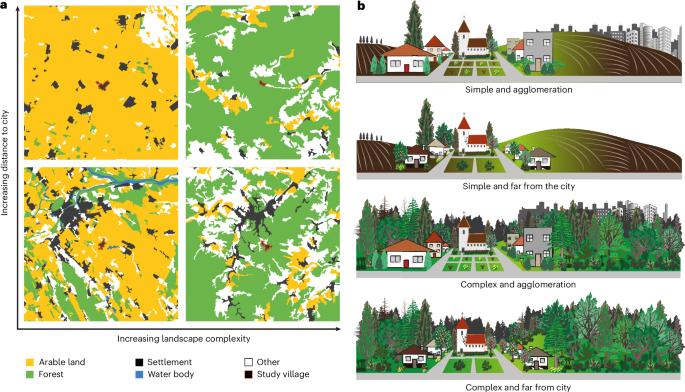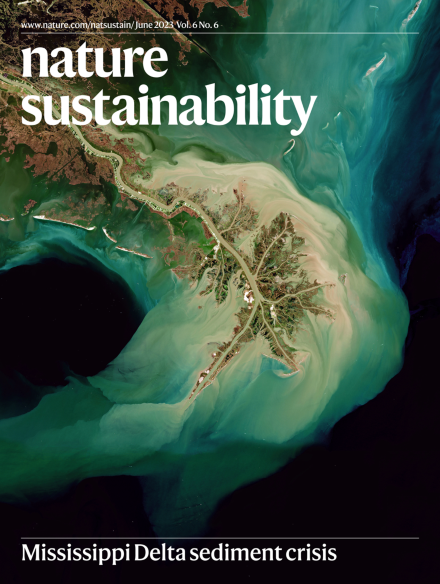生物多样性和人类福祉在村庄中的权衡和协同作用
IF 27.1
1区 环境科学与生态学
Q1 ENVIRONMENTAL SCIENCES
引用次数: 0
摘要
欧洲的农村景观经过数千年的塑造,支持着高度的生物多样性,但生活水平往往低于城市地区,这可能导致社会和环境的不公正。本文通过景观复杂性和城市化梯度研究了中欧和东欧村庄的生物多样性和社会经济环境。通过对包括植物、节肢动物和鸟类在内的9个分类类群的抽样调查,对村庄的生物多样性进行了调查。我们发现农业村庄的多营养多样性比森林占主导的景观低15%。城市周边地区提高了人类的幸福感(以更好的生活指数估计),但尽管人类足迹较大,但对生物多样性没有影响。在以森林为主导景观的集群式村庄中,生物多样性高,更好生活指数和足迹指标较高,表明生物多样性与社会经济地位以及环境不公正之间存在关联。我们的研究结果表明,维持或恢复村庄及其绿色基础设施周围的景观复杂性具有很高的社会生态价值,需要自上而下的激励和自下而上的举措。虽然生物多样性水平已经在许多不同的景观中得到了研究,但相比之下,村庄的探索相对较少。本研究考察了在社会和经济福祉的背景下,东欧村庄在景观复杂性和城市邻近性方面的生物多样性。本文章由计算机程序翻译,如有差异,请以英文原文为准。

Biodiversity and human well-being trade-offs and synergies in villages
Europe’s rural landscapes, shaped over millennia, support high biodiversity but often have lower living standards than urban areas, potentially leading to social and environmental injustice. Here we studied biodiversity and socioeconomic settings in Central and Eastern European villages across landscape complexity and urbanization gradients. We surveyed the biodiversity of villages by sampling nine taxonomic groups, including plants, arthropods and birds. We found 15% lower multitrophic diversity in villages in agricultural than in forest-dominated landscapes. City vicinity enhanced human well-being (estimated with Better Life Index) but did not affect biodiversity despite a larger human footprint. In agglomerated villages in forest-dominated landscapes, biodiversity was high, with higher Better Life Index and footprint metrics, suggesting associations between biodiversity, socioeconomic status and, thus, environmental injustice. Our results show the high socioecological value of maintaining or restoring landscape complexity around villages and their green infrastructure, requiring top-down incentives and bottom-up initiatives. While biodiversity levels have been studied in many different landscapes, villages have been relatively unexplored in comparison. This study examines biodiversity in Eastern European villages across landscape complexity and proximity to cities in the context of social and economic well-being.
求助全文
通过发布文献求助,成功后即可免费获取论文全文。
去求助
来源期刊

Nature Sustainability
Energy-Renewable Energy, Sustainability and the Environment
CiteScore
41.90
自引率
1.10%
发文量
159
期刊介绍:
Nature Sustainability aims to facilitate cross-disciplinary dialogues and bring together research fields that contribute to understanding how we organize our lives in a finite world and the impacts of our actions.
Nature Sustainability will not only publish fundamental research but also significant investigations into policies and solutions for ensuring human well-being now and in the future.Its ultimate goal is to address the greatest challenges of our time.
 求助内容:
求助内容: 应助结果提醒方式:
应助结果提醒方式:


